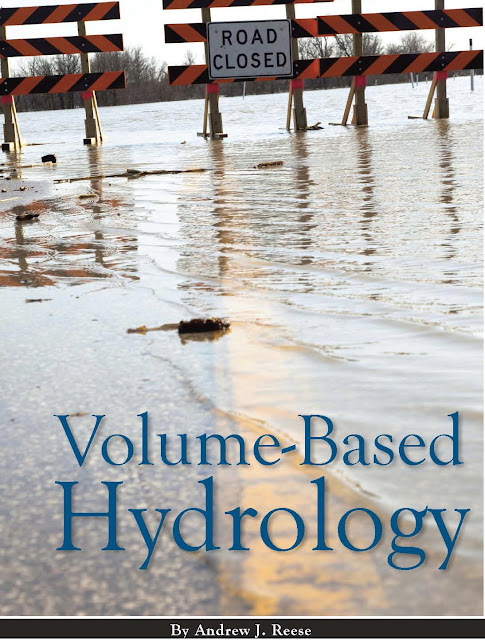Volume-Based Hydrology explained by Andy Reese
Examining the shift in focus from peak flows and pollution treatment to mimicking predevelopment volumes
Andy Reese, writing in the September 2009 issue of Stormwater magazine, states that “every 20 years or so, urban stormwater practitioners seem to stop and take stock of how we are doing”. He explains that:
- Sixty years ago, we figured that efficient drainage was the way to do things, using separate stormwater systems of pipes.
- Forty years ago, we figured out that efficient drainage was causing flooding problems and switched to a detention design standard.
- Twenty years ago, we found that detention ponds were failing for a number of reasons and switched to a more comprehensive master planning approach.
 “We are now facing another sea change in thinking that is reaching ‘pandemic’ proportions,” observes Andy Reese. “Recent discussion by stormwater opinion leaders is now pointing to a convergence on what we will call volume-based hydrology (VBH) and movement away from the peak-flow-based version.”
“We are now facing another sea change in thinking that is reaching ‘pandemic’ proportions,” observes Andy Reese. “Recent discussion by stormwater opinion leaders is now pointing to a convergence on what we will call volume-based hydrology (VBH) and movement away from the peak-flow-based version.”
“For various and often good reasons, there is a growing awareness of the need to handle stormwater and runoff with more focus on volume as a basis for design and decision making. It is making its way into America’s midsection and widely into the minds of regulators—federal, state, and local.”
“The shift toward VBH is a good thing, and making the shift carefully and gracefully will help ensure its long-term effectiveness,” concludes Andy Reese. His references include Stormwater Planning: A Guidebook for British Columbia.
About the Author:
Andrew (Andy) J. Reese has published over fifty articles and has co-authored (with Tom Debo) a best-selling 1400 page textbook on Municipal Stormwater Management. He has worked in all fifty states in a wide variety of assignments from highly technical modeling and criteria development to stakeholder group facilitation and stormwater utility implementation.


